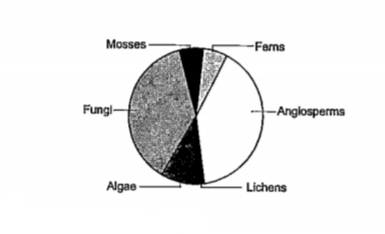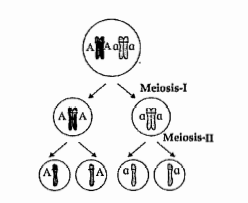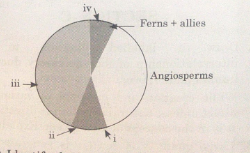Observe the global biodiversity distribution of major plant taxa in the below diagram and answer the questions that follow:
(c)How do fungi that are heterotrophs sustain themselves as a large population?
 Solution in Punjabi
Solution in Punjabi
Step by step video & image solution for Observe the global biodiversity distribution of major plant taxa in the below diagram and answer the questions that follow: (c)How do fungi that are heterotrophs sustain themselves as a large population? by Biology experts to help you in doubts & scoring excellent marks in Class 12 exams.
Updated on:21/07/2023Topper's Solved these Questions
Similar Questions
the unique event of flowering plant is-
View SolutionA disease caused by an autosomal primary non-disjunction is.
View SolutionGlobal biodiversity representing proportionate number of species of major taxa of invertebrates, vertbrates and plants are given below , Identify I,II and III by selecting the correct option :

View SolutionStudy the given diagram and answer the following :

Name the labelled area 'a' and 'b' of the pie diagram representing the global biodiversity of invertebrates showing their proportionate number of species of major taxa.
View SolutionHow is biodiversity distributed along major environmental gradients ?
View SolutionObserve the diagram given below and answer the questions :

(c ) Where element is used in it ?
View SolutionObserve the global biodiversity distribution of major plant taxa in the below diagram and answer the questions that follow: (a) Which group of plants are most endangered?
View SolutionObserve the global biodiversity distribution of major plant taxa in the below diagram and answer the questions that follow:
(b)Why are mosses/ferns so few?Give reason.
View SolutionObserve the global biodiversity distribution of major plant taxa in the below diagram and answer the questions that follow: (d)Which group of plants is most advanced, and which one is most primitive?
View SolutionObserver the following diagram and answer the questions given below:
 What is homologus chromosome?
What is homologus chromosome?
View SolutionObserver the following diagram and answer the questions given below:
 Where are genes located?
Where are genes located?
View SolutionObserver the following diagram and answer the questions given below:
 Do genes and chromosomes have similar behaviour? Justify.
Do genes and chromosomes have similar behaviour? Justify.
View SolutionObserve the below diagram and answer the following questions.

1. What is aim of this experiment?
View SolutionIndentify the areas labellel as I, ii, iii, and iv in the pie chart given below representing the biodiversity of plants showing their proportionate number of species of major taxa.

View SolutionDepict with the help of simple sketches the representation of global biodiversity of major taxa of plants, invertebrates and vertebrates
View Solution
